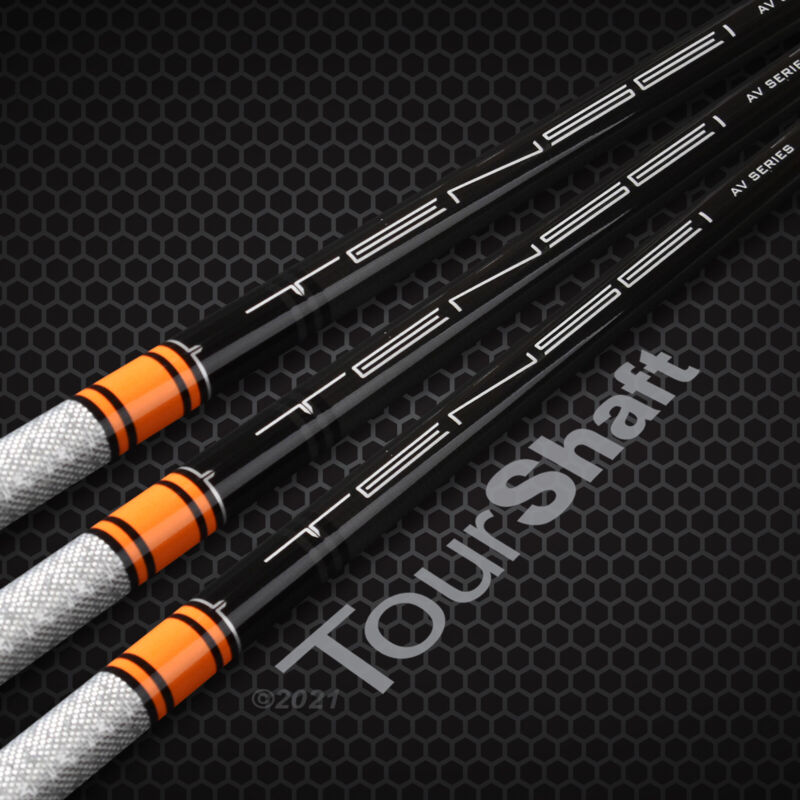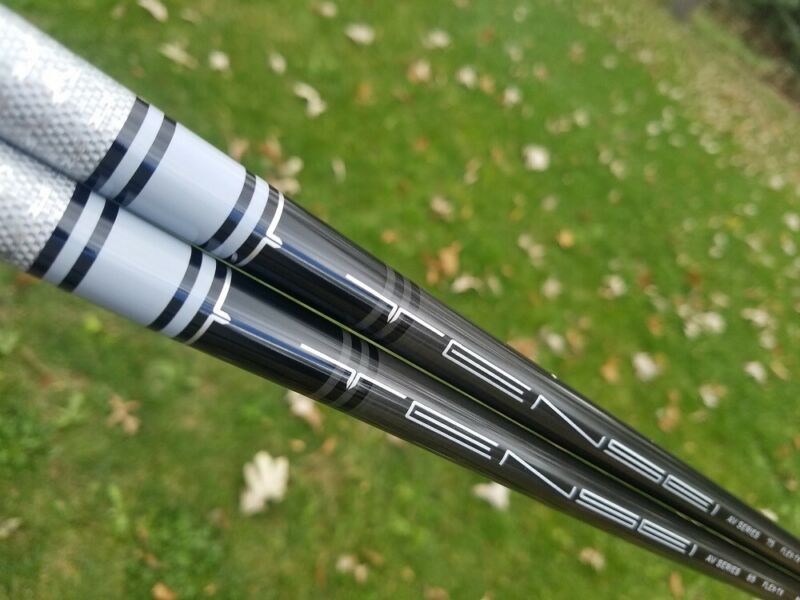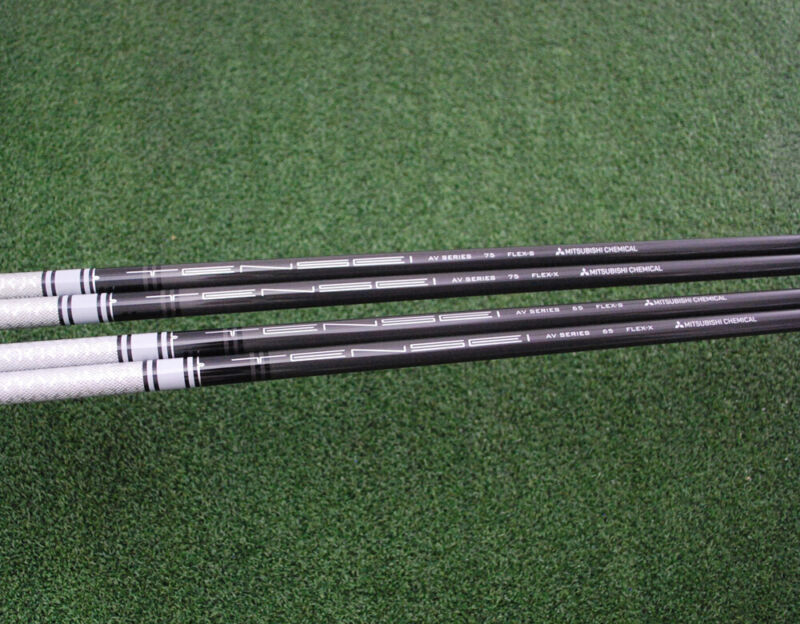Tensei Orange vs White: Which is Better?
Drifting into the turf of club shaft selections is akin to navigating the rich tapestry of an old library. As an inquisitive golfer, the sheer amount of diversity can be as much fascinating as it is bewildering.
Today, we’re standing at one such crossroads, where two celebrated shaft lines – the Tensei Orange and the Tensei White – cast elongated shadows of choice.
Avid followers of Mitsubishi Chemical America will immediately recognize these names.
But the question that persists is, which one to opt for? Let’s delve into the heart of the matter, one shaft at a time.
First, let’s look at the profile of each model:
Tensei Orange Review

The Tensei Orange shaft encapsulates a blend of stability and feel like no other.
This balance is achievable due to a multi-material design incorporating high-density tungsten and low resin carbon fiber.
The result is an extraordinary counter-balanced shaft that retains a lightweight profile while providing exceptional control.
Its distinct ‘counter-balanced’ approach makes the Tensei Orange a perfect companion for golfers with an aggressive tempo.
The additional weight toward the butt-end of the shaft allows players to gain a superior swing weight feel, without compromising on the shaft’s overall weight.
The result is an astonishing harmony of power and control.
With its mid-launch and mid-spin profile, the Tensei Orange is the epitome of versatility.
It can accommodate a wide range of swing types and, despite its counter-balanced nature, doesn’t demand a ‘one size fits all’ approach from its wielder.
Tensei White Review

The Tensei White, on the other hand, takes the path of a traditional ‘tip-stiff’ profile.
Embodying the classic ‘Blue Board’ profile with contemporary materials and engineering, the Tensei White is a manifestation of controlled aggression.
Designed to provide a low launch and spin, this shaft is an enticing proposition for players with higher swing speeds and a smooth tempo.
The Kevlar-woven, boron-infused tip section keeps the shaft firm and resolute during those high-velocity swings, ensuring minimal torque and maximum stability.
The Tensei White tends to favor the golfer who has a consistent swing, as it requires a bit more precision to maximize its potential.
It may not be as forgiving as the Tensei Orange, but it rewards those who can unlock its full potential with piercing ball flights and needle-like accuracy.
Tensei Orange vs White: Which is Better?

Now, it’s time for a comparison of both shafts…
Designs
Before diving deeper, it’s important to note that both shafts are built upon the same innovative ‘Carbon Fiber/DuPont™ Kevlar® (CK)’ weave featured in the butt-section.
This remarkable innovation dampens vibrations without surrendering the integral feedback. The result is a smoother feel during the swing and at impact.
Yet, despite the shared DNA, the Tensei Orange and White diverge greatly in terms of design philosophy.
The Orange, with its counterbalanced profile, offers a unique playability that emphasizes control.
Its extra weight at the butt-end promotes a sensation of ‘heft’ without adding actual weight, thus making it ideal for players seeking a heavier swing without fatigue.
In contrast, the Tensei White caters to players who crave laser-like precision and low, piercing trajectories.
Its stiff-tipped profile, complemented by high-density tungsten prepreg, bestows it with a firmer feel and lower torque.
Consequently, it’s better suited for those with high swing speeds, who can take advantage of the stiffness to control trajectory and enhance distance.
The Flight Paths: High or Low?
While shared innovation is a common thread, their flight patterns are what truly set these shafts apart.
The Tensei Orange, with its mid-launch and mid-spin characteristics, is designed to provide a balanced flight.
The center of gravity (COG) is pushed upward due to the counterbalanced design, allowing the golfers to increase their clubhead speed without sacrificing control.
For those who struggle with inconsistency in height and distance, the Orange might be the perfect remedy.
Conversely, the Tensei White’s stiff tip and lower torque ensure a low-launch and low-spin flight.
This isn’t for the faint-hearted; it’s for the power players, the high-swing speed aficionados who desire a penetrating ball flight.
The ability to keep the ball low, under the wind, while achieving maximum distance can be a game-changer on gusty days or fast greens.
Flex: Choose Your Power
The Mitsubishi Tensei series comes in a variety of flexes to meet diverse player needs. Ranging from Regular to Extra Stiff, golfers can choose the level that best matches their swing speed and style.
Tensei Orange’s more balanced profile and a ‘soft-stiff’ pattern make it more versatile and comfortable to use for a wider range of players.
The firm butt section combined with a soft mid-section aligns the club better with its target, improving accuracy without any drastic changes to the swing.
In contrast, the Tensei White, given its more aggressive, ‘stiff-soft-stiff’ profile, is more suited for players with high swing speeds.
The stiffer tip and butt sections combined with a softer mid-section allows for a lower trajectory and less ball spin – ideal for players who favor a more aggressive playstyle.
Performance
Having explored the fundamental features of both shafts, it is equally important to understand how they translate into on-course performance.
The Tensei Orange shaft provides a mid-launch with mid-spin characteristics. Its smooth feel and stable performance can give you the confidence to attack greens, knowing that your ball will stick where it lands.
Ideal for the weekend warrior looking for a blend of control and distance in their game.
On the other hand, the Tensei White shaft is designed for players desiring a low, penetrating ball flight.
It delivers low spin and low launch characteristics, making it a boon for hard-hitting golfers with faster swing speeds who need to keep their drives under the wind.
Each shaft is designed to cater to specific player needs and preferences. The ‘right’ choice isn’t universally defined, but rather, it depends on individual golfer characteristics and course conditions.
Adjustability
Whether it’s the Tensei Orange or the White, the ability to fine-tune and adjust your golf equipment to your style is an essential element of the modern game.
The Tensei Orange offers a higher degree of adjustability due to its balanced profile. This shaft caters to a wider spectrum of golfers and swing types.
It provides a softer midsection, allowing golfers to hit higher and longer, which can be advantageous, particularly in different weather and course conditions.
The Tensei White, on the other hand, is a lower launching, lower spinning shaft, designed for those with faster swing speeds and who desire a stiffer, more stable feel.
It may not offer as much adjustability due to its firm mid and tip sections, but for players who prefer a more controlled and consistent performance, it is an ideal choice.
The ability to dial in the perfect club specifications can lead to increased confidence and improved scoring.
Therefore, it is essential to know what you want from your club and choose a shaft that aligns with your swing style and game aspirations.
Value for Money: A Worthwhile Investment?
No comparison would be complete without a discussion of the financial considerations.
Golf is an investment game, not just on the course, but off it as well. The cost of golf shafts can fluctuate based on brand, technology, and the material used.
It’s a balance of cost and performance; the better the performance you seek, the higher the cost you need to bear.
The Tensei Orange, with its unique multi-material design and construction, offers excellent performance with a relatively more affordable price tag.
It is a versatile shaft suitable for a broad range of players, making it an excellent value for money.
This affordability, combined with its all-around performance, makes it an enticing choice for many golfers.
In contrast, the Tensei White is priced slightly higher due to the advanced materials and technology that go into its construction.
The White is targeted at the more skilled players seeking precision and control, which can justify its higher price point.
The shaft’s robust and consistent performance can give golfers a competitive edge, potentially leading to lower scores and more enjoyable rounds. Thus, for some, the extra investment is entirely worth it.
In essence, your choice between the two will hinge on your priorities – whether it’s budget-friendly versatility or premium performance.
Related Posts:
- Vokey SM7 vs. SM8: Are There Any Differences?
- P770 vs Apex Pro: Which is Better?
- True Temper AMT Red Review

Want to Get Better at Golf?
Get "Ben Hogan's Five Lessons" and join thousands of others improving their golf skills.
Learn the Fundamentals: Stance and Posture > Golf Grip > The Swing.
This book has LOADS of positive reviews. THOUSANDS OF REVIEWS. A MILLION COPY SOLD. CHEAP!
Get the Book Here
